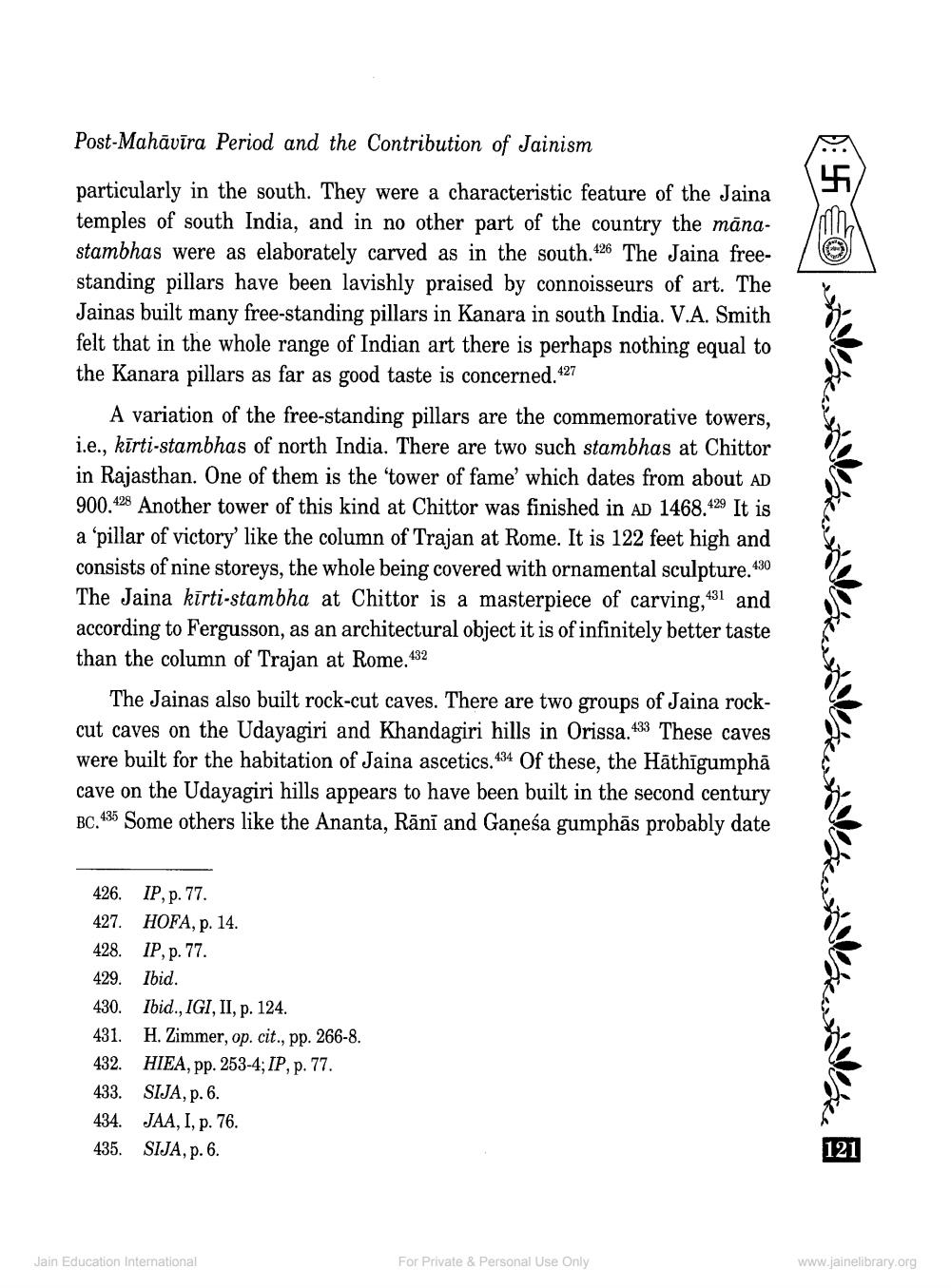________________
Post-Mahāvīra Period and the Contribution of Jainism
particularly in the south. They were a characteristic feature of the Jaina temples of south India, and in no other part of the country the mānastambhas were as elaborately carved as in the south.426 The Jaina freestanding pillars have been lavishly praised by connoisseurs of art. The Jainas built many free-standing pillars in Kanara in south India. V.A. Smith felt that in the whole range of Indian art there is perhaps nothing equal to the Kanara pillars as far as good taste is concerned. 427
A variation of the free-standing pillars are the commemorative towers, i.e., kīrti-stambhas of north India. There are two such stambhas at Chittor in Rajasthan. One of them is the 'tower of fame' which dates from about AD 900.428 Another tower of this kind at Chittor was finished in AD 1468.429 It is a 'pillar of victory' like the column of Trajan at Rome. It is 122 feet high and consists of nine storeys, the whole being covered with ornamental sculpture.430 The Jaina kirti-stambha at Chittor is a masterpiece of carving, 431 and according to Fergusson, as an architectural object it is of infinitely better taste than the column of Trajan at Rome. 432
The Jainas also built rock-cut caves. There are two groups of Jaina rockcut caves on the Udayagiri and Khandagiri hills in Orissa. 433 These caves were built for the habitation of Jaina ascetics. 434 Of these, the Hāthīgumphā cave on the Udayagiri hills appears to have been built in the second century BC.435 Some others like the Ananta, Rāni and Ganesa gumphās probably date
426. IP, p. 77. 427. HOFA, p. 14. 428. IP, p. 77. 429. Ibid. 430. Ibid., IGI, II, p. 124. 431. H. Zimmer, op. cit., pp. 266-8. 432. HIEA, pp. 253-4; IP, p. 77. 433. SIJA, p. 6. 434. JAA, I, p. 76. 435. SIJA, p. 6.
121
Jain Education International
For Private & Personal Use Only
www.jainelibrary.org




